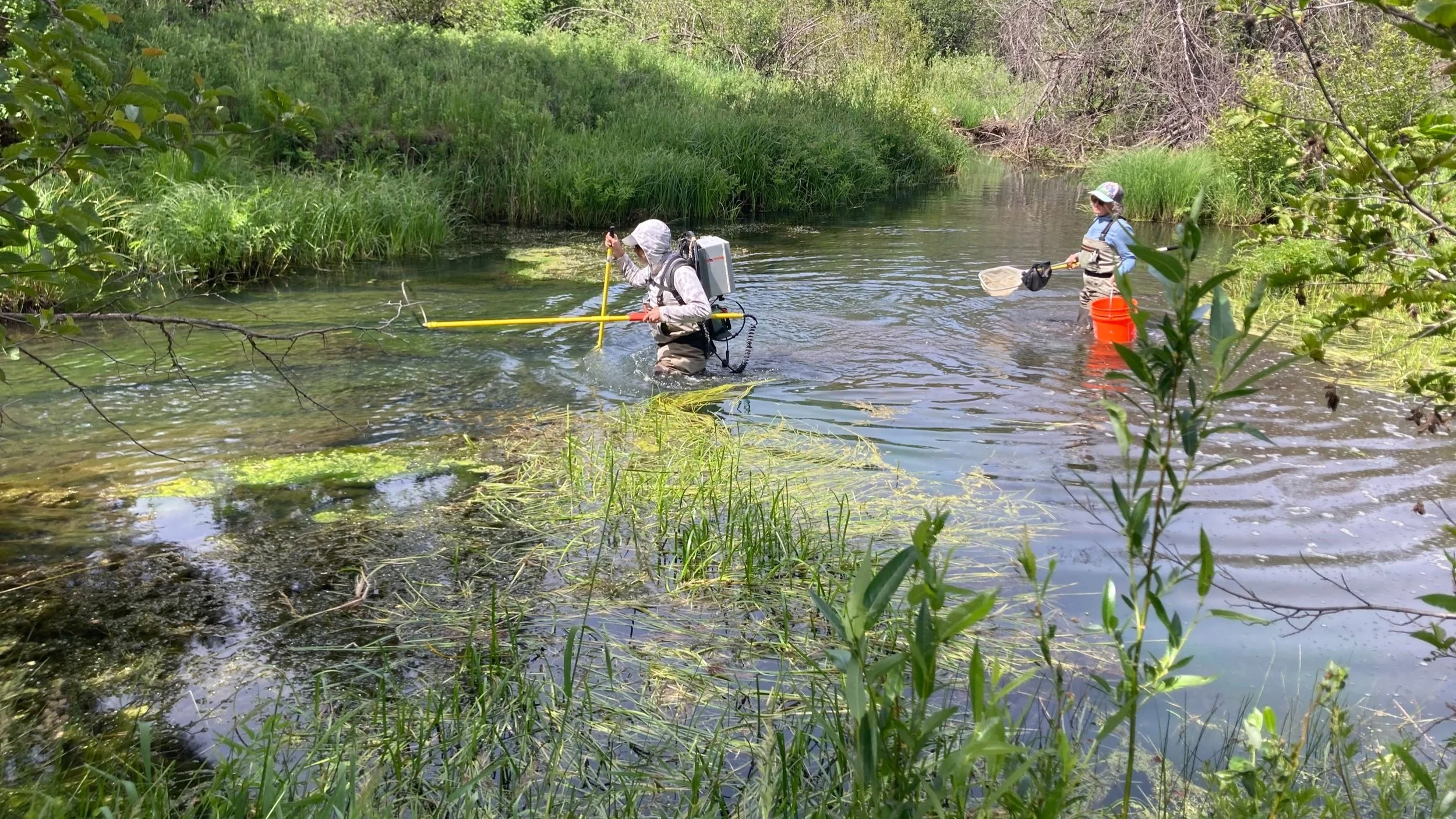Information in this blog post is from the presentation put on for the Friends of Cascade-Siskiyou National Monument by BLM Fish Biologist, Chris Volpe.
By: Zaynab Brown
If you have been following our organization for any length of time, you probably know that we are really into beavers. Beavers do amazing things for the landscape and those who live in it, including humans. You may have also heard the word “riparian” thrown around. In ecology, riparian is defined as relating to wetlands adjacent to rivers and streams. While we have touted the benefits of healthy riparian areas, it’s time that we learn more about the streams themselves. Who lives in these, sometimes ephemeral, waters and in what unique ways are they being impacted by changes to our climate and waterways? To answer these questions, the Friends recruited one of the best people for the job: Chris Volpe.
Chris Volpe is the Medford District and Ashland Field Office Fish Biologist. He has been with the BLM for 22 years and spent another four years prior to that in the Rogue Basin collecting fish and habitat data with the Oregon Department of Fish and Wildlife. Chris has been involved with monitoring, research, and restoration of aquatic species and habitats in the Cascade-Siskiyou National Monument for most of his career.
On Friday, June 14th, Chris and a room full of the aquatically curious gathered to gain a better understanding of the aquatic habitats and species of the Monument. This starts with understanding that, within the Monument, there are 724 miles of streams, 57 of which are fish-bearing! Of course, not all streams are flowing all year. Those streams are called “intermittent streams” and make up the majority at 455 miles compared to 268 miles of “perennial streams”, or streams that flow year-round. However, even intermittent streams provide important habitat, including for fish. Springs are also a type of free-flowing aquatic habitat that contribute high-quality water to the larger streams and provide unique habitat.
Not all aquatic habitat in the Monument is free flowing. You can also find 790 acres of ponded and slow water habitat. While most of this acreage is represented by large reservoirs such as Hyatt and Little Hyatt Lakes, there are also ponds and fens. Fens are rare, peat-accumulating wetlands associated with springs and are found in a couple locations within the Monument.



It is of no surprise, considering that the Monument was designated for its incredible biodiversity, that this diversity extends to its aquatic inhabitants. There currently are seven native fish species found within the Monument, amphibians including the Pacific Giant Salamander and threatened Oregon Spotted Frog, Western Pond Turtles, mammals such as beavers and river otters, as well as many species of mollusk and macroinvertebrates. The native fish include Speckled Dace, Tui Chub, Sculpin, Cutthroat trout, Redband trout (a subspecies of the rainbow trout), Jenny Creek Suckers, and migratory steelhead. Though this diversity may soon see an increase due to one of the biggest changes to the watersheds of southern Oregon and Northern California that has happened in quite some time.
If you have been following local news, you have most surely heard of the successful campaign to remove the dams on the Klamath River. This momentous accomplishment will have ripple effects on aquatic ecosystems far and wide, including in the Monument. A big winner may be the migratory fish species. Jenny Creek, which is part of the Klamath River Watershed, may now be colonized by both Steelhead and serve as a place for Chinook Salmon to spawn and rear. The future may also see Pacific Lamprey and Coho Salmon make a return. However, natural barriers like Jenny Creek Falls will still limit the extent that fish will be able to colonize streams within the Monument.
On Saturday, June 15th, participants got an opportunity to experience the aquatic life in Jenny Creek first-hand. It was a beautiful day as we watched Chris and Jenna Volpe don waders and a backpack that looked like it would sooner be found on the set of GhostBusters than a wild and scenic waterway. Yet this piece of retro-looking technology would allow us a rare peek at what lived below the water’s surface.




We stopped at a section of Jenny Creek where beaver dam analogues (BDAs) had successfully slowed and spread the water into a wide and murky pool. Chris jumped in, metal rod in one hand and net in the other, as he and Jenna methodically made their way slowly through the pool while releasing small amounts of electricity intended to stun any fish or amphibians in the vicinity, making them easier to catch. This method, called electrofishing, soon turned up results as Chris gently placed several specimens into a bucket containing water that Jenna was carrying.
Once back up on dry land, Chris carefully lifted out a small Redband Trout. Its silver scales and distinctive pattern glistened in the daylight. It was easy to picture it flitting through the water, glinting as it passed through dappled shade cast on the surface. Next, Chris lifted out the other star of the show: an adult Jenny Creek Sucker.
Jenny Creek Suckers are a unique “dwarfed” population of Klamath Small-scale Sucker, endemic only to Jenny Creek. This is due to the population's isolation from other suckers by Jenny Creek Falls, a complete fish passage barrier to upstream migration. It was easy to see how the sucker was suited for life sifting through the bottoms of streams in search of algae with its dull brown color and muted appearance. Chris remarked that fish surveys this year had revealed an uncommon abundance of Jenny Creek Suckers, particularly juveniles. He speculated that it was due to an unusual high flow event in the creeks and streams this spring resulting in the reduction of the population of macroinvertebrates that also feed on the algae, allowing more food for the new generation of fish.

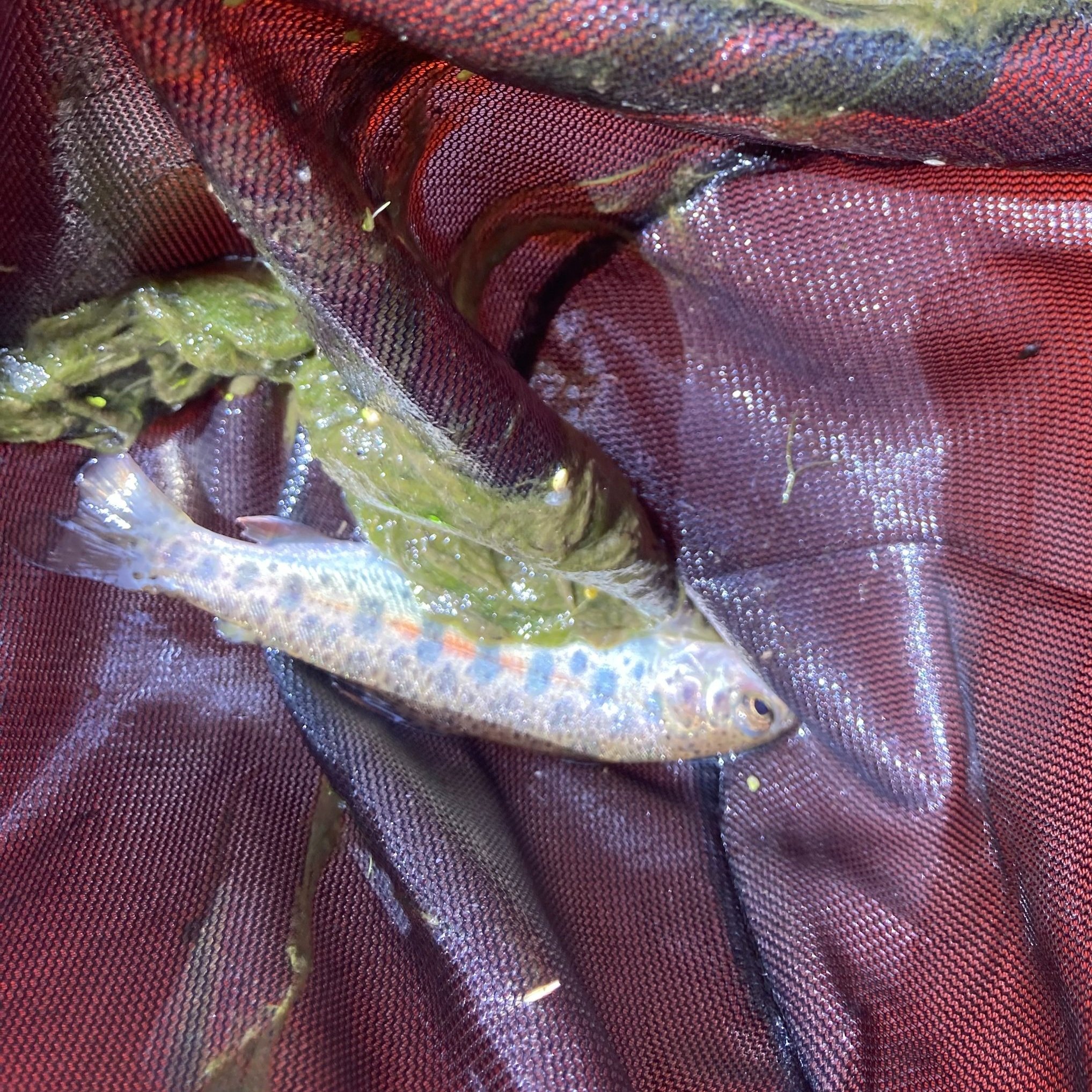
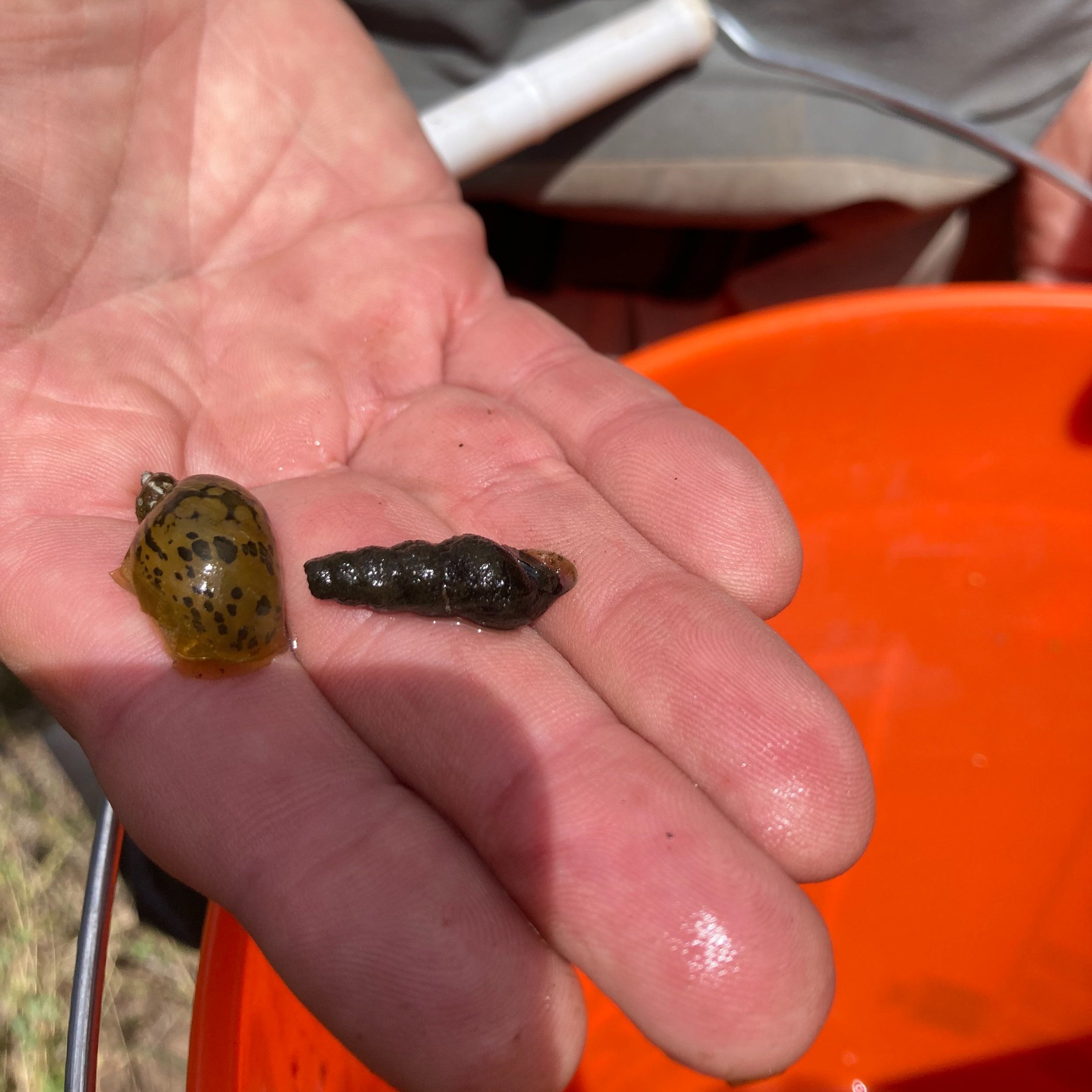
The next stop for the group was lunch at a nearby pond. This pond, the result of restoration work by the BLM in 2019 to excavate a historic pond that had been filled in by natural processes. The pond was then soon colonized by the Western Pond Turtle, a species that may soon be listed under the Endangered Species Act, and beavers whose lodge could be seen rising from the middle of the pond. As participants took their lunch, we all waited quietly, hoping to see a turtle pull itself out onto one of the many floating logs to bask in the afternoon sun. The turtles, notorious for their shyness and sensitivity to vibrations, remained elusive until someone spotted one out near the middle of the pond where it probably assumed our clumsy footsteps made us poor swimmers. Binoculars were passed around as we all got a chance to see the surprisingly large reptile.
However, with nearly all stories of ecosystems in the present day, there seem to be existential threats around every corner. This is also true for the aquatic ecosystems of the Monument. The fact is that fish, and other aquatic species, need water to survive. Major diversions transfer water from the Klamath Watershed to the Rogue Basin Watershed to increase irrigation for the Valley below. This results in significant reduction in the flow in lower Jenny Creek, as well as other creeks and streams in the Monument, often during the lowest-flow time of the year. Infrastructure that allows these kinds of diversions, such as dams, also often results in the complete aquatic organism passage barriers. Degraded water channels also become more efficient at moving water away from the landscape instead of storing it in flood plains and as ground water. This degradation is associated with many things including the removal of beavers, cattle grazing, reduced riparian vegetation, and roads, culverts, and ditches.
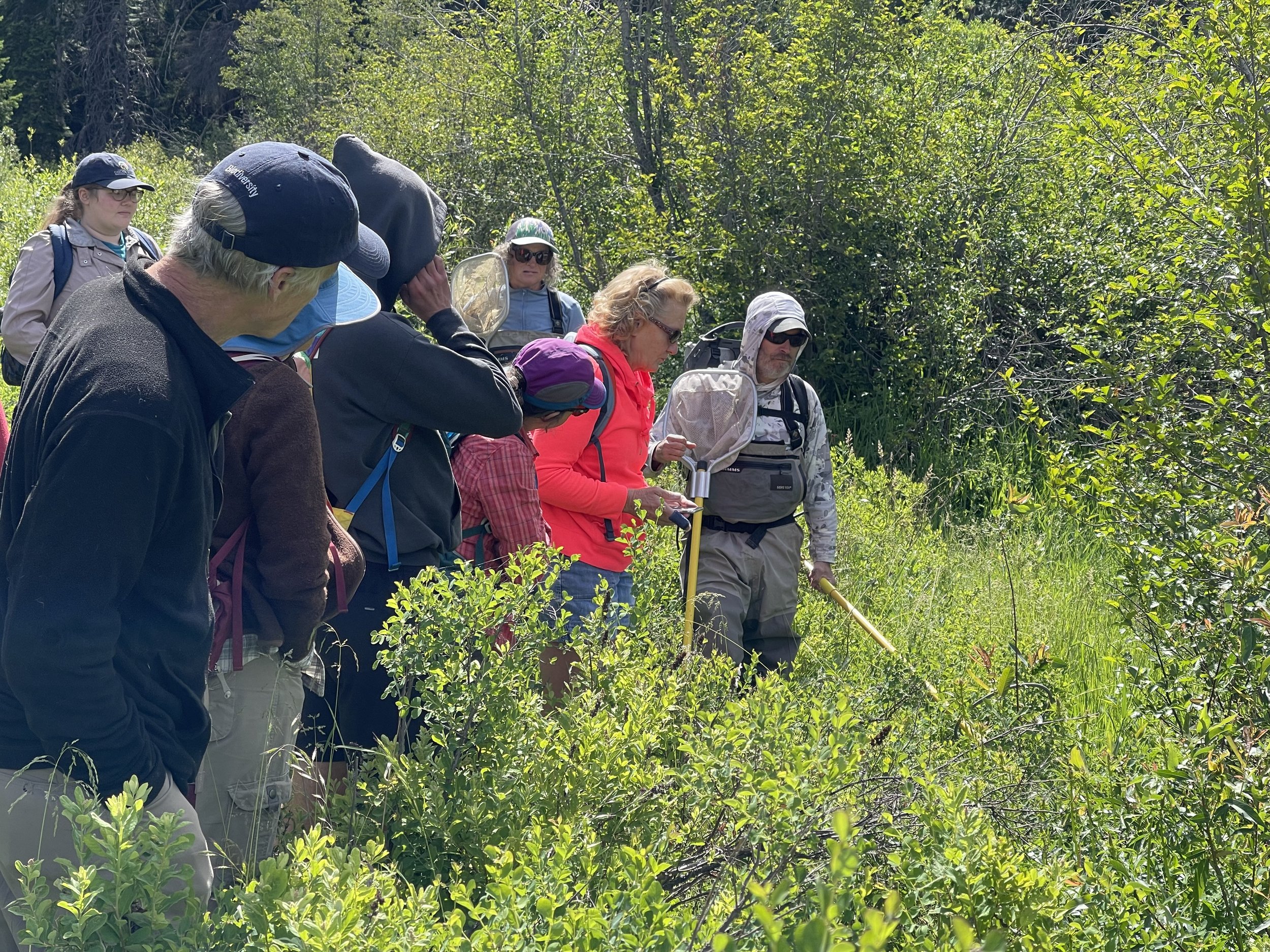
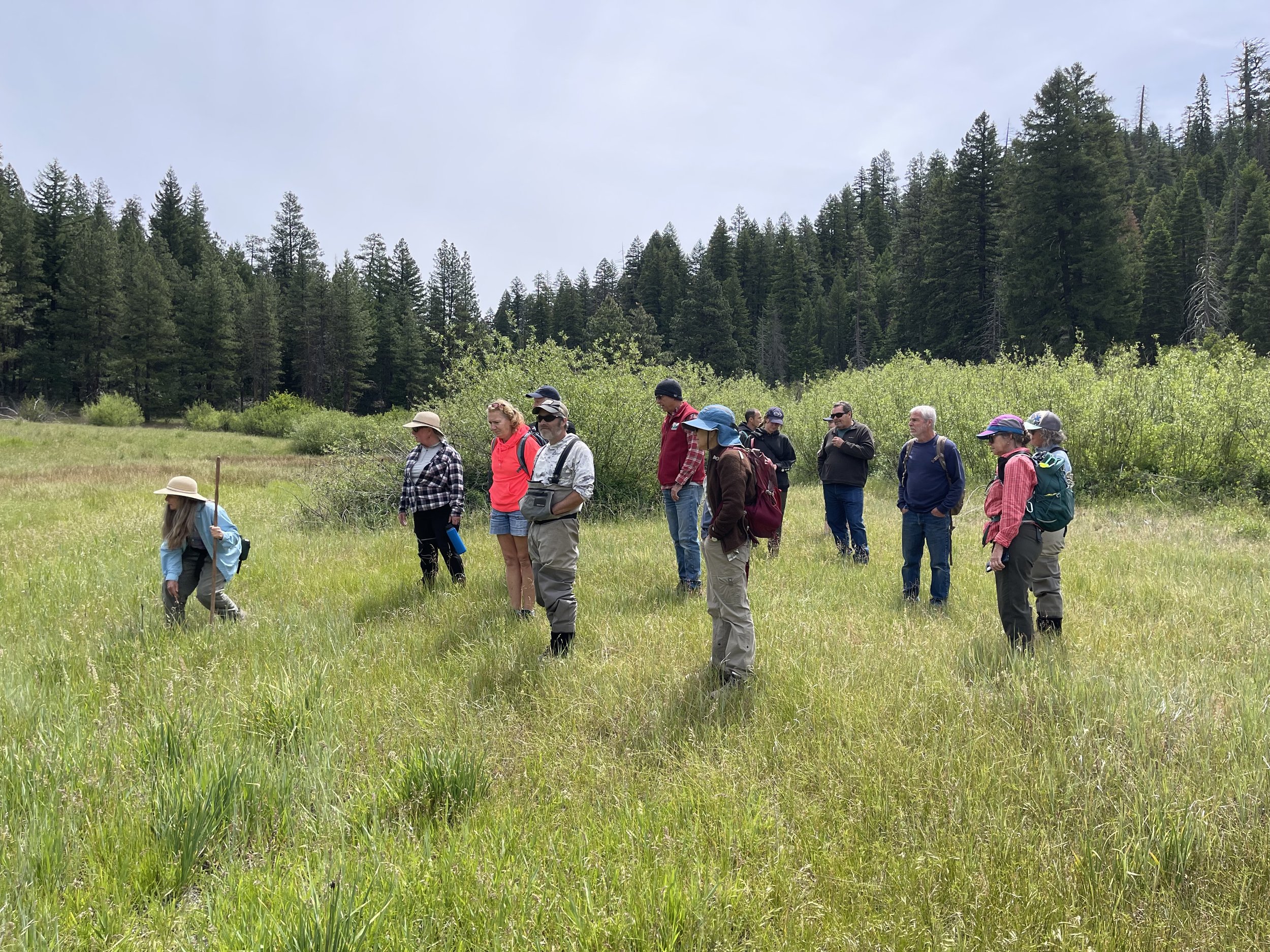
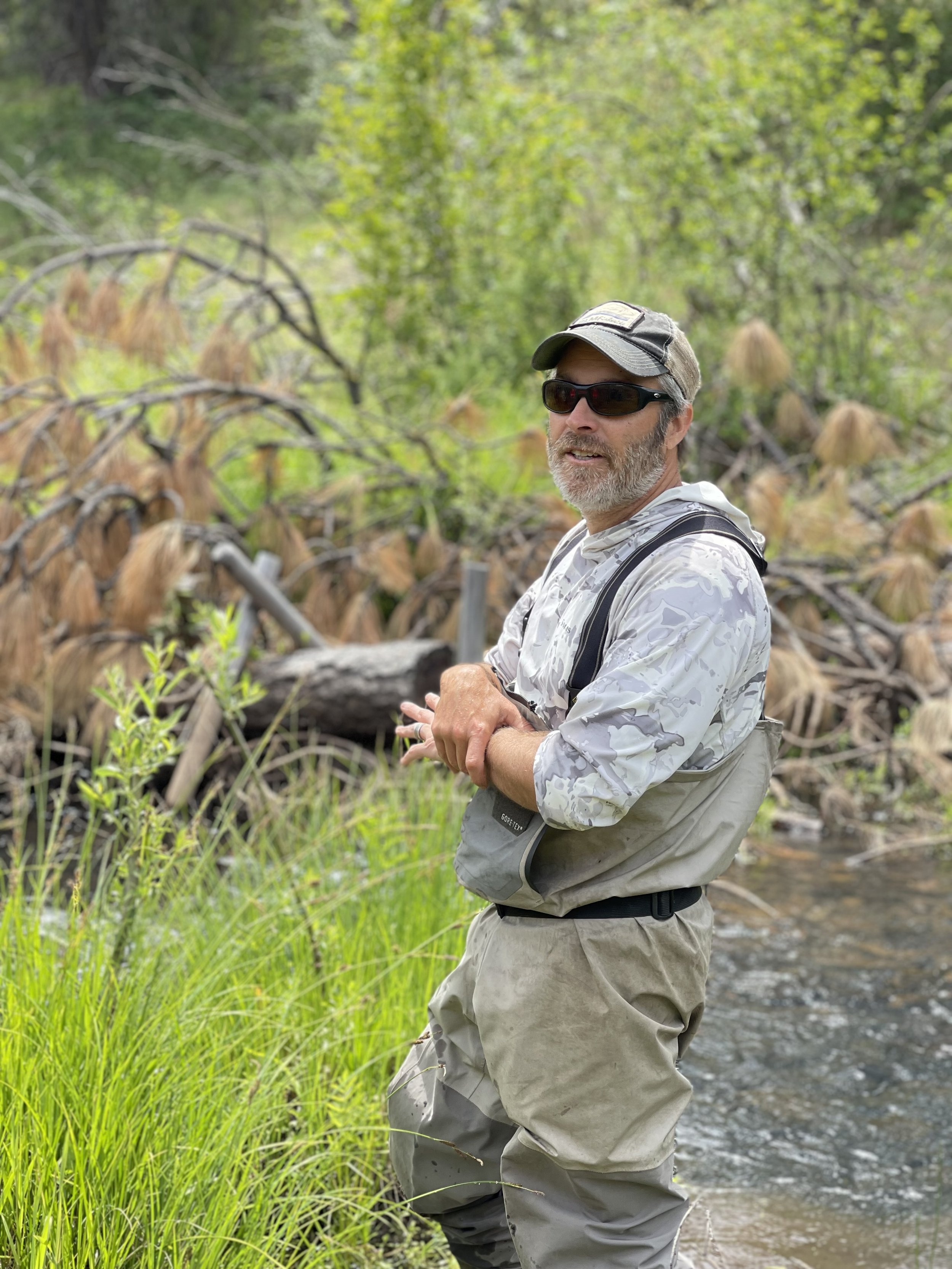
Of course, you cannot discuss water without acknowledging the role of long-term drought in reducing the overall amount of precipitation falling on the landscape each year. Many streams that were once considered perennial several decades ago are now intermittent and dry up most years. This reduces the available habitat for aquatic organisms.
Like most problems that are largely due to human activity, solving it also relies on the actions of humans. This includes process-based restoration, such as adding large wood/rootwads to waterways, low-tech process-based restoration such as beaver dam analogues and post-assist log structures (PALS), and the reintroduction of beavers onto the landscape. It is also important to consistently take inventory to determine the “what, where and how” of existing ecosystems processes and then monitor to evaluate the efficacy of restoration efforts. An citizen-science example of both of these is the recent Beaver Scavenger Hunt put on by the Friends to determine where beavers are currently in the Monument and what they are doing. The BLM also carries out work such as monitoring water quality and quantity and populations of aquatic organisms.
It can be too easy for land-loving humans to overlook the fascinating aquatic habitats and species. Yet these habitats often form the foundation of many important ecosystems in the Monument. While there is a very long road ahead to restore the majority of the waterways to healthy states, proven progress has been observed using the restoration strategies mentioned above. It now requires consistency of efforts from both the private and public spheres to emulate and restore the natural processes through funding and hands-on work.
If you would like more information and to get involved in aquatic and riparian restoration taking place in the Cascade-Siskiyou National Monument and surrounding area, please sign up for our newsletter and check out some of the work being done by other local non-profit organizations below.
Project Beaver: https://projectbeaver.org/beavers
Vesper Meadow: https://www.vespermeadow.org/vesper-meadow-preserve

